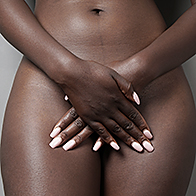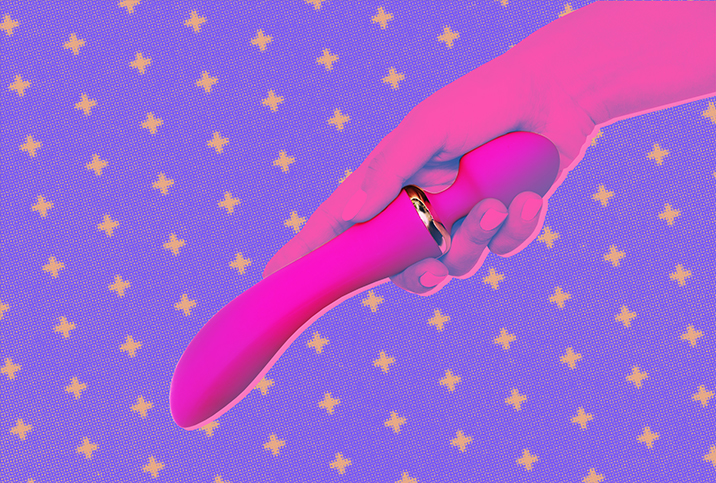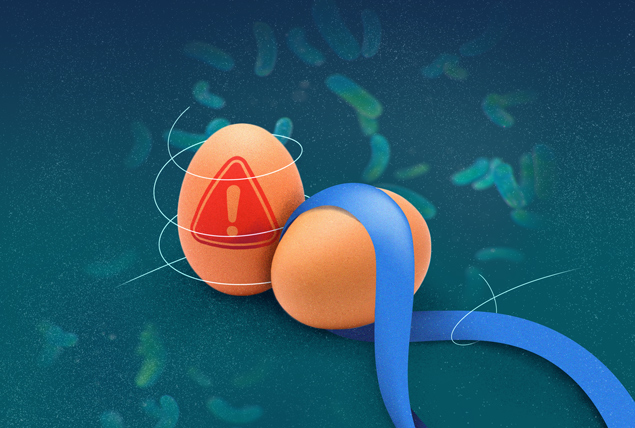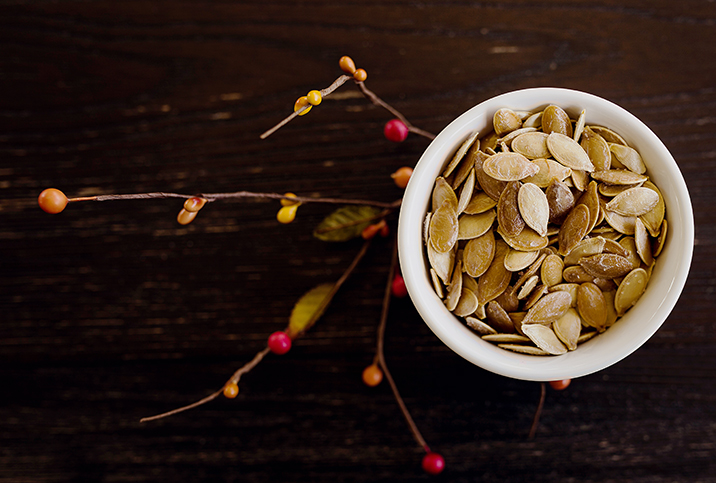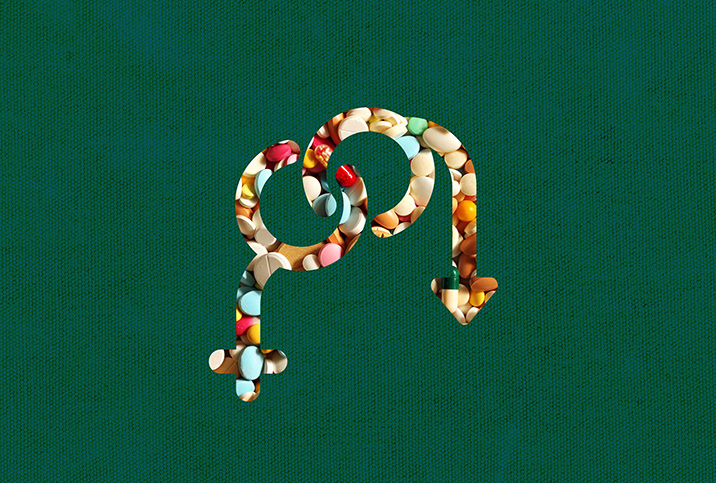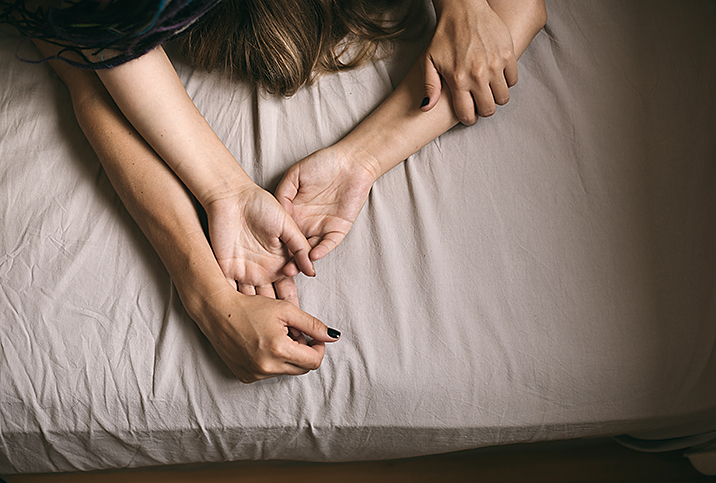Dietary Changes Can Help Your Endometriosis

You've probably heard someone say, "You are what you eat." Generally, it's meant to encourage healthy eating, but how accurate is it? Can we extend the application of this phrase to our understanding of certain diseases and conditions?
In the case of endometriosis, research says yes, diet can impact disease development. Endometriosis is a condition that impacts approximately 10 percent of reproductive-age women, according to the World Health Organization (WHO).
It's a hormone-dependent, chronic inflammatory disease in which the uterine lining (the endometrium) grows outside of the uterus and can attach to other organs, including the fallopian tubes, ovaries, bladder and intestines. This can cause debilitating symptoms, such as intense period pain, heavy menstrual flow, fatigue, and sometimes pain with sex and infertility.
Currently, there is no cure for endometriosis. Over-the-counter (OTC) pain medications are prescribed to manage period pain and hormone therapy is often explored for regulation of symptoms. Surgery to remove the excess endometrium is sometimes performed. However, before exploring these treatment options, your doctor might recommend a less invasive approach, including making dietary changes.
Understanding the role of diet
There are foods that can amplify symptoms, making the pain worse, noted Kecia Gaither, M.D., who is double board-certified in OB-GYN and Maternal-Fetal Medicine. "Foods that influence hormonal regulation and increase inflammation can negatively impact patients with endometriosis," she said. There are also foods that can "decrease the pain and inflammation associated with the disease."
For Jodi Scott-Ramirez, a doula from Ontario, diet made all the difference in treating her endometriosis. Her journey with the condition started when her period began at age 9. It wasn't long before she started experiencing extreme pain. "By the time I was 10, the cramping was very intense," she said in an interview.
Throughout her teenage years, she had such intense pain during her period she would miss almost two weeks of school at a time. "The pain increased with age, and I always had very heavy bleeding," said Scott-Ramirez.
She was prescribed birth control at age 14 in an attempt to better regulate her periods, which is a common management medication for hormonal issues. However, for her, hormonal birth control wasn't an effective treatment. She experienced breakthrough bleeding while on the pill and had to try several different types.
At 18, Scott-Ramirez had laparoscopy surgery to determine what was causing her intense symptoms, and finally received her official diagnosis of endometriosis. It was at this point she decided to take matters into her own hands.
"I was tired of trying different birth control pills and pain medications," she recalled. So she started researching. She came across an article in a medical journal about rats and the impact of pesticides on their development. "I remember thinking, If there are negative consequences for rats, why not for people?"
Scott-Ramirez decided to ditch foods with pesticides and eat organic. She also removed gluten and dairy from her diet. Scott-Ramirez said before changing her diet, when her endometriosis was at its worst, she would bleed 18 days out of the month. Within six months of changing what she ate, she saw a major reduction in symptoms and was down to a seven-day period.
How pesticides affect endometriosis
Research suggests Scott-Ramirez made the right call in going organic to ease her endometriosis pain. Pesticides have been shown to increase the risk of estrogen-driven diseases, including endometriosis.
One 2013 study, published in the journal Environmental Health Perspectives, looked at 248 women diagnosed with endometriosis and living in the Pacific Northwest United States. Researchers found being exposed to concentrations of β-HCH and mirex were positively associated with increased risk of endometriosis.
β-HCH is a component of the agricultural insecticide HCH, which was used in the United States until the mid-1970s. Mirex was an insecticide used in the '60s and '70s for fire ant control. It was also used as a fire-retardant additive.
A person's geography can determine their exposure risk to various types of pesticides. For example, populations who eat fish out of mirex-contaminated lakes and waterways, including the Great Lakes, may be at higher risk of exposure. Indigenous populations in arctic regions are particularly vulnerable as well—however, little data is available on the long-term effects of their exposure.
Overall, the research suggests that exposure to these insecticides, even if their use was discontinued decades ago, may affect the health of the current generation of reproductive-age women—particularly with regard to diseases caused by hormone disruption.
Avoiding consumption of foods with pesticides—as best as possible—may be a good way to balance hormones and alleviate endometriosis pain.
Dietary factors and food suggestions
Scott-Ramirez isn't alone in successfully stabilizing her endometriosis with dietary changes. Researchers have identified several dietary factors that can both help and hurt when it comes to managing endometriosis symptoms.
For example, consuming higher rates of vegetables, fruits, legumes and whole grains has been associated with a lower risk of endometriosis.
Gaither said women with diets high in trans fats, red meat and gluten have higher rates of endometriosis compared to women who consume less of these foods. Additionally, alcohol and caffeine can influence hormone regulation and increase inflammation, exacerbating endometriosis symptoms.
Find your FODMAP foods
On the other hand, foods that fall into the FODMAP category (fermentable oligosaccharides, disaccharides, monosaccharides and polygons—short-chain sugars) have been noted to have a positive effect on endometriosis, according to Gaither.
A few of the common FODMAP foods are:
- Garlic and onions
- Certain fruits, including apples, apricots, cherries, figs and plums
- Iron-rich foods, such as dark leafy greens, broccoli and beans
- Foods rich in fatty acids, including salmon, sardines, trout and walnuts
- Antioxidant-rich foods, such as dark chocolate, spinach and beets
Alleviate inflammation with this golden spice
Turmeric, a spice commonly used in Indian and Southeast Asian dishes, is a known anti-inflammatory. Since endometriosis is an inflammatory condition, there is a hypothesis that turmeric could help alleviate some of the symptoms.
Turmeric gets its anti-inflammatory properties from a compound it contains called curcumin. Some studies have suggested curcumin can help regulate the immune system.
Considering this, curcumin could have a potential positive benefit on symptoms. However, it's important to note curcumin is not an FDA-approved treatment for any condition. More research is needed to understand the potential impacts of turmeric on endometriosis.
Manage symptoms with seaweed
While not everyone's favorite snack, seaweed has shown promise in helping alleviate endometriosis symptoms. In a 2005 study, published in The Journal of Nutrition from Oxford Academic, when seaweed broth was dripped on human ovary cells, estrogen levels dropped. The theory is seaweed either inhibits estrogen production or facilitates the breakdown of estrogen.
Although this is just a petri dish example, similar results have been found in humans. A 2004 study looked at three women with abnormal menstrual cycles, two of whom had endometriosis. The women experienced a drop in estrogen levels after eating powdered seaweed daily for several menstrual cycles.
While acknowledging the limitations of the study, including the extremely small sample size and lack of control group, the authors were optimistic daily consumption of seaweed "may provide some relief in the treatment of endometriosis."
So, what should I eat?
Research and anecdotal evidence suggest making specific dietary changes can help manage endometriosis symptoms. Of course, changing your diet is easier said than done. It can feel like a daunting task, made even more difficult if you live in a food desert or have a limited income. But being aware of the types of foods that affect your condition, and making small changes where possible, are good first steps.
For additional guidance and more information, Gaither suggests talking to a nutritionist. "For patients suffering with endometriosis, it may be prudent to consult with a nutritionist as to dietary options that may help to decrease symptoms," she advised.






